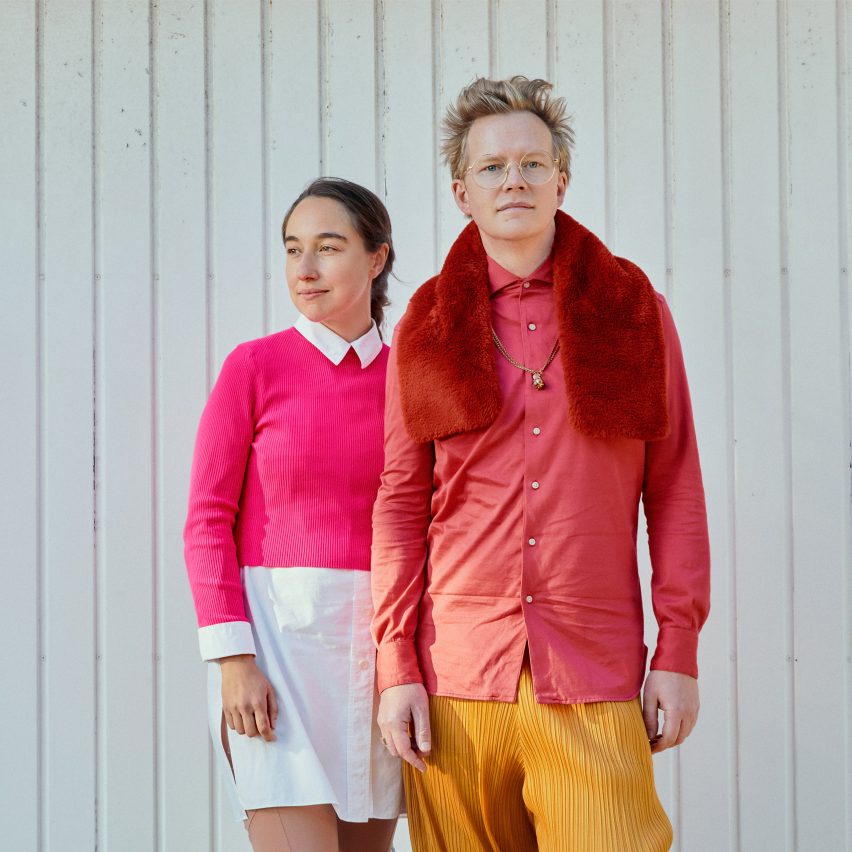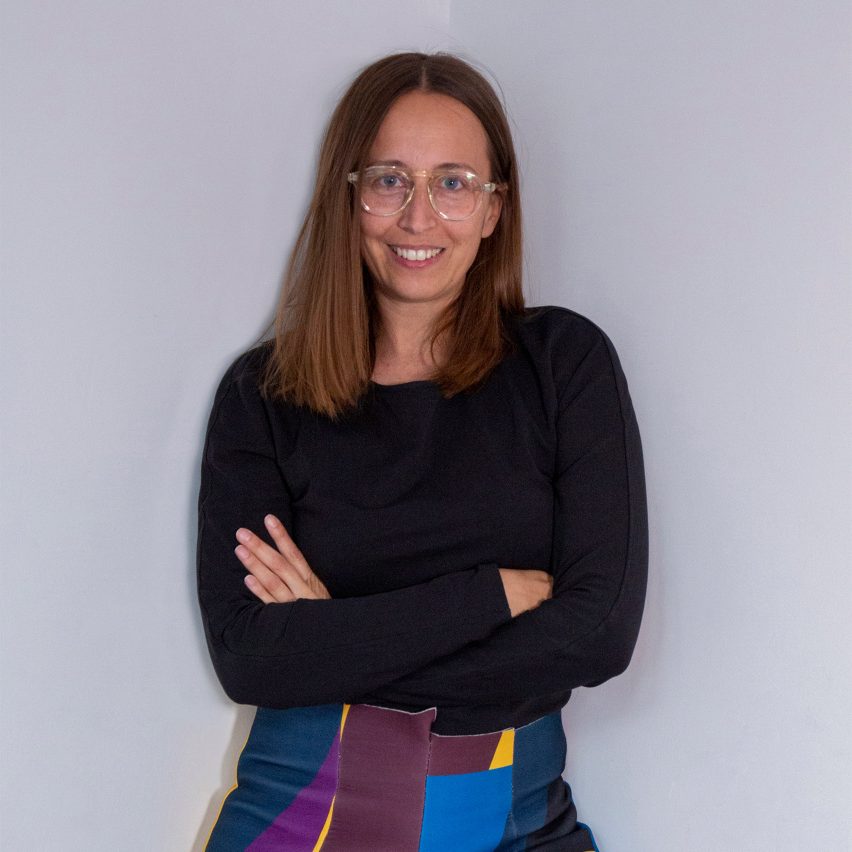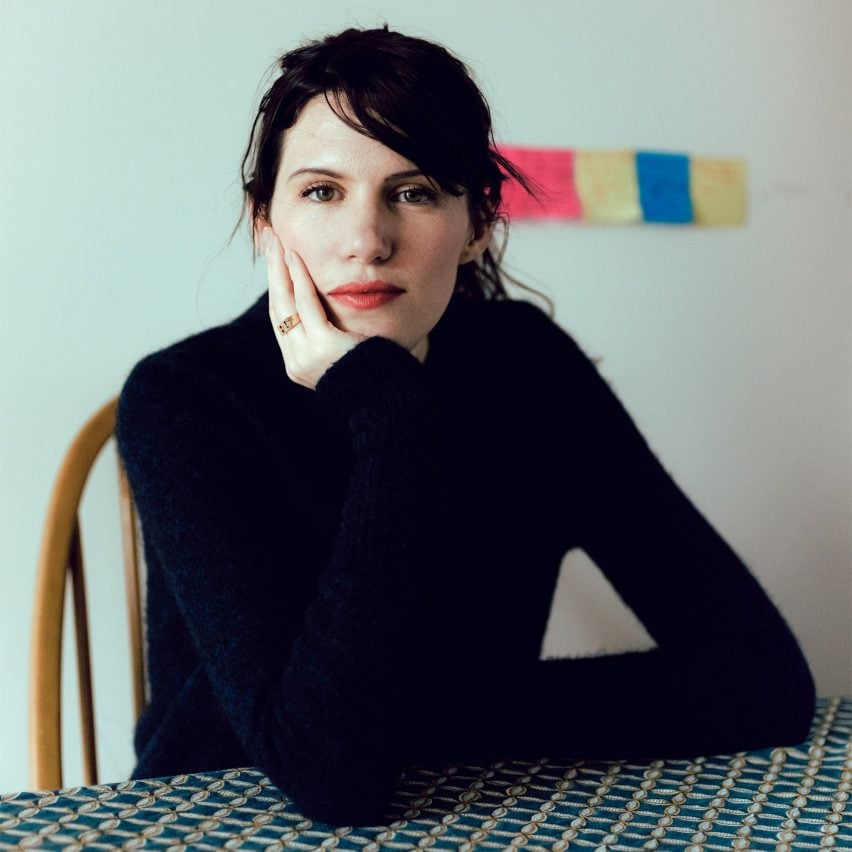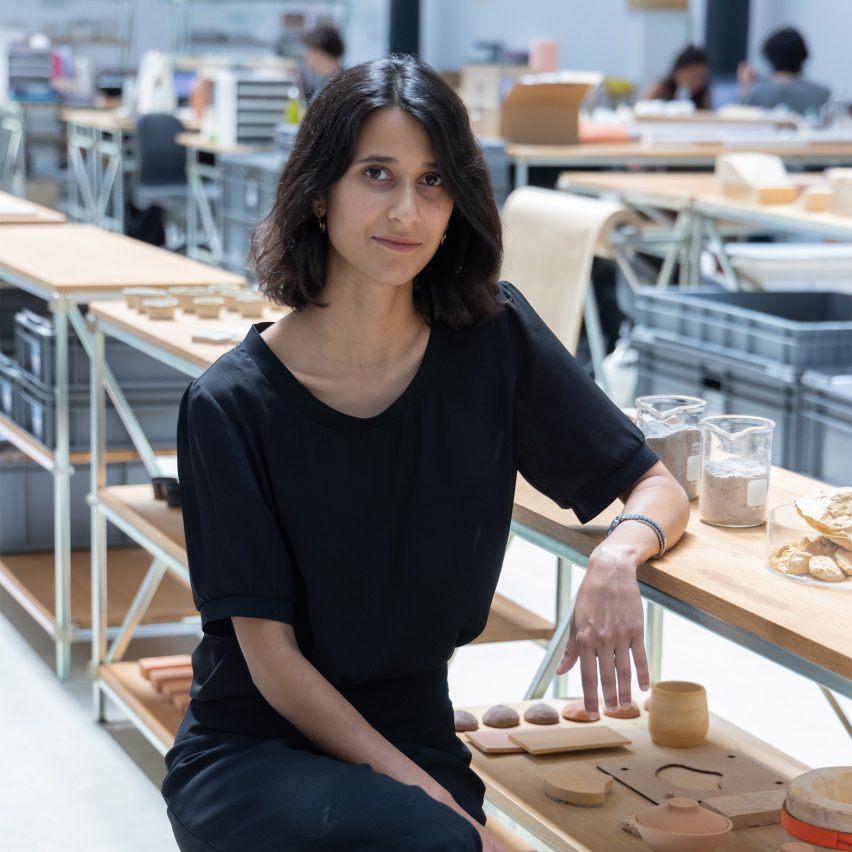Highlights from week two of Dezeen 15 include Space Popular predicting a "three-dimensional version of the internet"
The second week of the Dezeen 15 festival saw Space Popular demonstrating a new type of portal for the metaverse while Henna Burney celebrated salt as a material for the future.
The festival will see a total of 15 creatives present ideas for how to change the world over the next 15 years. Running from 1 to 19 November, it will feature a different manifesto and live interview each weekday. See the line-up here.
Read on for some of the highlights of the second week:

Space Popular predicts "three-dimensional version of the internet"
Day six: in their manifesto, architects Lara Lesmes and Fredrik Hellberg of Space Popular proposed using curtain-like gateways to allow people to move between virtual worlds.
"What's coming is a three-dimensional version of the internet," they said in a live interview with Dezeen founder and editor-in-chief Marcus Fairs.
"By 2050, all media will be spatial," they said. "We will no longer have smartphones or laptops and monitors and screens like this. Even watching a sitcom will be done in immersive digital environments."
However, this emerging 3D metaverse will require new types of spatial design to help people find their way around.
Space Popular has proposed using curtains as a metaphor. People would use a swiping gesture to pull back their current environment and reveal the one they want to go to next, as demonstrated in the video above.

"How can rationing become poetic?" asks Francesca Sarti
Day seven: Francesca Sarti of food design studio Arabeschi di Latte proposed a new aesthetic based on scarcity rather than abundance. This would help reduce waste and pollution from the food industry.
"Most of the environmental issues related to food are due to exaggeration, excess, overproduction and over-consumerism," she wrote. "To put it simply, they are problems of quantity."

"Architects rarely taught to address their accountability" says Beatrice Galilee
Day eight: in her manifesto, curator Beatrice Galilee pointed out the disconnect between the cosy world of architecture and design and the global systems and supply chains that are doing so much damage to the planet.
"Architects have rarely been taught to address their accountability for, nor have they substantially been held accountable for, the vast chain of social and environmental consequences of construction," she wrote in her manifesto titled The Design We Can't See.
"It's time for both media and culture to take an interest," she said, adding that an emerging generation of designers is more interested in shining a light on these issues than in a traditional career.
"The radical architecture of the future may come from architects who refuse to build at all," she wrote. "The time when designers had the luxury of focusing only on end products has come to a close."

The earth's surface is a natural "layer of garbage" says Jalila Essaïdi
Day nine: designer Jalila Essaïdi turned conventional thinking on its head with a manifesto arguing that nature will eventually be able to neutralise human trash.
Therefore, she claimed, designers should work to help provide nature with new challenges rather than pursuing sustainable solutions that aim to leave the planet unchanged.
Sustainable design merely passes environmental problems on to the next generation, argues designer Jalila Essaïdi in her Dezeen 15 manifesto. Instead, we should accept that nature will find inventive ways of dealing with our waste.
"Sustainable design strategies might seem to make sense in our current capitalist system," she wrote. "Yet they merely pass the problem on to the next generation."
Left to its own devices, nature will turn "poisons into pistons of exotic engines," the Dutch designer said.
Nature itself is a polluter, she argued, since the surface of the planet is made up of its detritus. "This soil, this layer of garbage, this trash coat of ever-increasing complexity, is what gives this planet its very name: earth."

"Salt is a material of the future" says Henna Burney
Day 10: Henna Burney, a designer and researcher at Atelier Luma in France, wrote about the potential of salt as a raw material for products and interiors and even as a potential source of sustainable power.
"The future will be built with materials that are both new and old," she wrote in her manifesto.
"Natural but overlooked materials such as salt have extraordinary potential. We only need to look around with fresh eyes, rediscover lost knowledge and chart new ways of thinking about materials and their ecosystems."